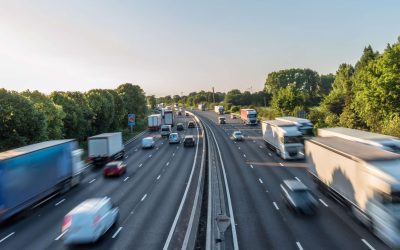New 20mph speed limits now apply to more roads in Central London.
The reduced speed limit areas have been implemented alongside existing 20mph zones within Transport for London’s (TfL) road network. The extra 9km of road, within the Congestion Charging Zone, have now been designated as 20mph zones as part of TfL’s plans to help improve safety on London’s busy roads.
Whilst such a measure may seem draconian, experts believe that during most peak-time travel periods, motorists will not notice the difference.
Head of Roads Policy at the RAC, Nicholas Lyes, said:
“TfL’s new speed limits put safety at the heart of the changes, but the reality for drivers is that average speeds are now so low on central London’s roads that many drivers are unlikely to reach such speeds during busy periods.
“More broadly, RAC research suggests compliance with 20mph limits has worsened as they have become more prevalent in recent years. It is important that road design encourages drivers to reduce their speeds and promotes smoother, safer driving alongside these new limits.”
To enforce these new measures, existing speed cameras in the area will be recalibrated and from April, a new speed enforcement team will be deployed at strategic locations throughout the Capital, aided by new laser video speed enforcement technology.
What are the penalties for speeding?
The minimum penalty for speeding is a £100 fine and 3 penalty points added to your licence.
You will be disqualified from driving if you build up 12 or more penalty points within a period of 3 years unless the court can be persuaded that there is ‘exceptional hardship’ or a separate legal argument for allowing you to continue to drive. This is a discrete and complex area of law and you would benefit greatly from legal advice and representation to put forward the strongest possible argument to retain your ability to drive.
What is the process?
The process of being prosecuted for speeding depends on the method of detection.
If you were caught speeding by a speed camera, within 14 days you will receive a notice of intended prosecution (NIP) and a Section 172 Notice.
The Section 172 Notice will ask you to fill in details of the person driving the vehicle at the time of speeding.
Once you have sent the Section 172 Notice back, you will receive either a fixed penalty notice or a letter requiring you to attend Court.
If you were stopped by police for the offence of speeding, the police have several options at their disposal. They may simply warn you to stop speeding. They may issue you a fixed penalty notice immediately or through the post. The police may also order you to go to Court. You will receive a letter if you are required to attend Court.
Penalties
If you are issued with a fixed penalty notice, you have the option of pleading guilty or not guilty.
If you plead guilty, you will receive a fine of £100 and three penalty points will usually be added to your licence. However, in some circumstances, you may be given the opportunity to attend a speed awareness course in lieu of receiving penalty points on your licence.
If you decide to plead not guilty, you will have to attend Court. Should the Court find you guilty of the speeding offence, the fine and penalty points imposed will likely be higher.
The penalties depend on the circumstances of the offence; how fast you were going and in which area. You may be fined up to £1000 or £2500 if you were caught speeding on a motorway.
You may be disqualified or suspended from driving.
New Drivers
If within two years of passing a driving test, a driver receives six penalty points on his licence, the licence will be revoked.
If you have been cautioned by the police for a motoring offence in Essex or have received a summons to appear in court, please contact Elizabeth Bradshaw on 01206 369889 or via e-mail.
This is not legal advice; it is intended to provide information of general interest about current legal issues.



